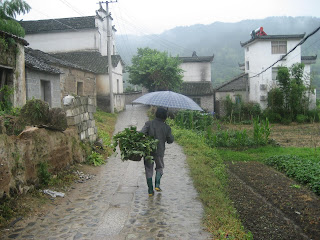
 In 1994, the government owned virtually all of the cars in China. Latest figures show car ownership rates of approximately 10 people per 1,000.
In 1994, the government owned virtually all of the cars in China. Latest figures show car ownership rates of approximately 10 people per 1,000.Although this is far behind the U.S. car ownership rate of 700 per 1,000 people, should China reach similar levels, the number of cars in China would jump from approximately 1.3 million to 910 million! With a nation of 1.3 billion people, the environmental consequences would be tremendous. And this increase is well within the realm of possibility, considering that the ownership rate has increased at a rate of 25% per year during the past decade.
To put this into perspective, only 10% of the Chinese population experiences a similar lifestyle to the “typical” American. With its rapidly rising income and wealth, air pollution is only one potential environmental consequence as this nation ascends into the echelons of prosperity. And who are we, as citizens of one of the wealthiest nations in the world, to say that China is undeserving of a similar lifestyle?
From June 7 through June 22, I had the good fortune of visiting three large cities in China (Beijing, Shanghai, and Xiamen) to learn more about how China balances its economic growth with environmental and agricultural production targets. After delivering lectures at the China Agricultural University and attending several large conferences, I came away with the knowledge that China recognizes that environmental quality standards are important for long-term economic growth and prosperity in its nation.
However, right now, China is prioritizing economic growth and stability. At the top of this agenda is feeding 1.3 billion people, and ensuring that the nation can withstand worldwide shocks to the commodity markets. An example of the latter is the 2008 corn and energy price volatility that was created by the “perfect storm” of worldwide weather fluctuations, financial crisis, and an increased demand for biofuels. The result? Don’t look any time soon for China to implement rigorous environmental standards that rival those of Europe or the U.S.
This is a perfect example of an environmental Kuznet’s curve, in that environmental quality at first declines as a nation’s wealth increases. However, after a point, a nation’s environmental quality increases as the wealth of a nation increases. Furthermore, the case of China evokes intriguing questions about the extent to which wealthier nations are obligated to ensure that the citizens of the world enjoy a certain standard of living…not just for the sake of humanity, but for the sake of the environment.
-Catherine M.H. Keske, Ph.D.
Adjunct Professor, Sturm College of Law
Assistant Professor, Colorado State University




No comments:
Post a Comment